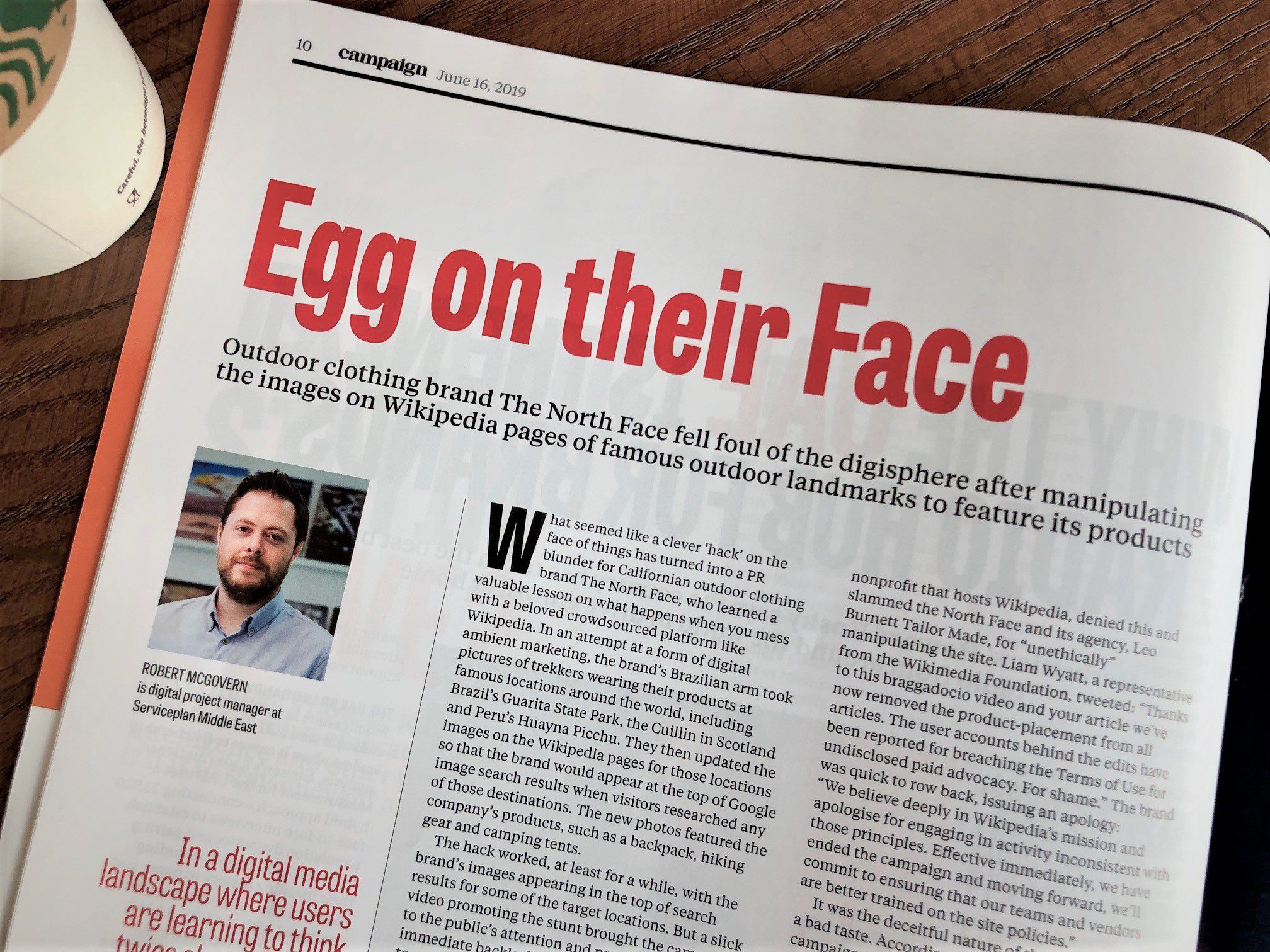Outdoor clothing brand The North Face fell afoul of the digisphere after manipulating the images on Wikipedia pages of famous outdoor landmarks to feature its products.
Originally featured in the June 16th 2019 issue of Campaign Middle East magazine
What seemed like a clever ‘hack’ on the face of things has turned into a PR blunder for the Californian outdoor clothing brand who learned a valuable lesson on what happens when you mess with a beloved crowdsourced platform like Wikipedia. In an attempt at a form of digital ambient marketing, the brand’s Brazilian arm took pictures of trekkers wearing their products at famous locations around the world, including Brazil’s Guarita State Park, Cuillin in Scotland and Peru’s Huayna Picchu. They then updated the images on the Wikipedia pages for those locations so that the brand would appear in the top of Google image search results when visitors researched any of those locations. The new photos featured the company’s products, such as a backpack, hiking gear and camping tents.
The hack worked, at least for a while, with the brand’s images appearing in the top of search results for some of the target locations. But a slick video promoting the stunt brought the campaign to the public’s attention and prompted an immediate backlash online. “We hacked the results to reach one of the most difficult places: the top of the world’s largest search engine,” bragged the brand, outlining their ‘Top of Images’ project. “We did what no one has done before… paying absolutely nothing”.
The Wikipedia community were having none of it, and volunteer editors were quick to remove the branded photos noting that the effort breached the site’s user terms for paid advocacy (there is no advertising on Wikipedia). The brand claimed to have “collaborated” with Wikipedia on the campaign, but the Wikimedia Foundation, the nonprofit that hosts Wikipedia, denied this and slammed the North Face and its agency, Leo Burnett Tailor Made, for “unethically” manipulating the site. Liam Wyatt, a representative from the Wikimedia Foundation, Tweeted – “Thanks to this braggadocio video and your article we’ve now removed the product-placement from all articles. The user accounts behind the edits have been reported for breaching the Terms of User for undisclosed paid advocacy. For shame.” The brand was quick to row back, issuing an apology: “We believe deeply in Wikipedia’s mission and apologize for engaging in activity inconsistent with those principles. Effective immediately, we have ended the campaign and moving forward, we’ll commit to ensuring that our teams and vendors are better trained on the site policies.”
It was the deceitful nature of the project that left a bad taste. According to the agency behind the campaign, Leo Burnett Tailor Made, the biggest obstacle was updating the photos without attracting the attention of Wikipedia moderators, as site editors could remove the images at any time. What makes the stunt even more disingenuous is the way in which the brand seemed to take pride in gaming the system. Although ‘the system’ in this case was one of the most beloved and valuable crowdsourced hubs of knowledge on the planet. The arrogant way in which they promoted the stunt afterwards didn’t help. In cases like this, the ensuing controversy and attention can be part of the overall campaign goal. Although that’s unlikely in this instance as such trickery doesn’t fit well with the wholesome brand image of The North Face.
In a digital media landscape where users are slowly learning to think twice about trusting what they read, this highlights the responsibility that brands have in maintaining ethical practices when communicating online. Brands are always looking for clever ways to leverage consumer behaviour, but The North Face has found out the hard way that there are some lines that you must not cross, and attempting to manipulate a platform that users trust is one of them. The term ‘fake news’ gets thrown around a lot these days, and the last thing you want is for your brand to be associated with this kind of misinformation. In its statement, Wikipedia compared the campaign to defacing public property: “When The North Face exploits the trust you have in Wikipedia to sell you more clothes, you should be angry. Adding content that is solely for commercial promotion goes directly against the policies, purpose and mission of Wikipedia to provide neutral, fact-based knowledge to the world… They have risked your trust in our mission for a short-lived marketing stunt”. Maybe next time The North Face might not be so adventurous.






